In case you weren’t aware, Jim Rossignol – games journo, co-founder of Rock, Paper, Shotgun, and now a game developer – really likes robots.
His studio is called Big Robot. His last game, Sir, You Are Being Hunted, is a procedurally generated, sandbox stealth game, where Victorian robots hunt humans for sport. And his newest game, The Signal From Tölva, is stacked to the rafters with robot goodness: You play as a robot, on a planet inhabited entirely by robots, fighting other robots, trying to discover the secrets of the robot planet’s ancient robot past.
Is ‘robot’ even a word anymore? I’m starting to lose track. Where was I? Robots? Yes, robots.
There are a few key elements to Rossignol’s borderline robo-fetishism that smack you square in the chops as bloody brilliant, the second you pick up The Signal From Tölva.
Firstly, the game looks amazing. While the environments are pretty enough in a Borderlands kind of way – that’s the barren, desolate beauty of the first Borderlands, not Borderlands 2‘s post-vault-opening verdancy – it’s the essence of robotics, interwoven into the game’s core, that makes it stand out visually.
There are a lot of robotic artefacts scattered around Tölva, many of which you’ll come to investigate as you spend more time with the game. But much of what appears from a distance to be part of the landscape – rocks, boulders and small hillocks – frequently reveal themselves to be the megalithic remains of giant robots. Flashes of metal reach from the earth, corroded and worn, somewhere between an palaeontology excavation and an aircraft boneyard.
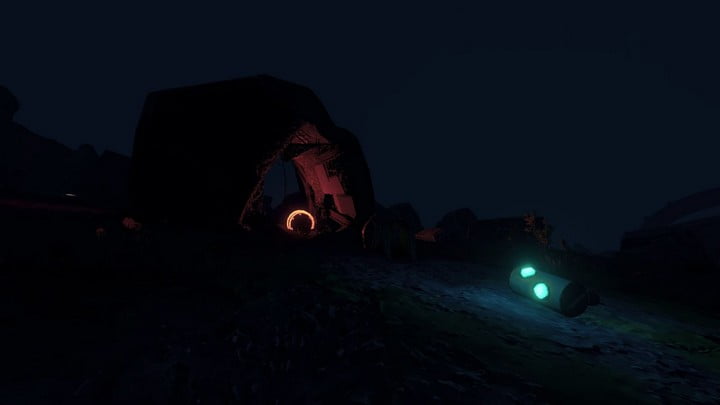
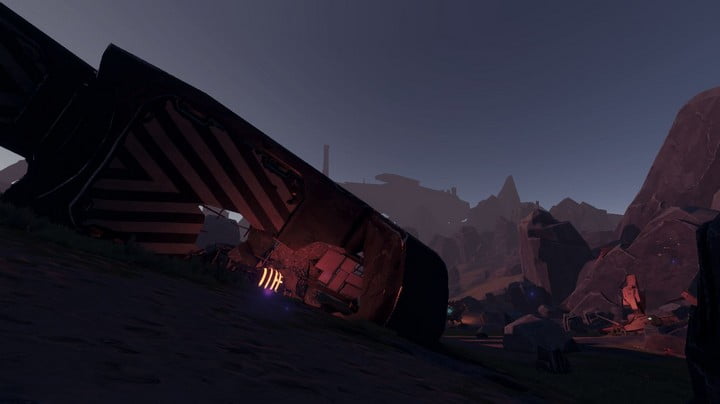
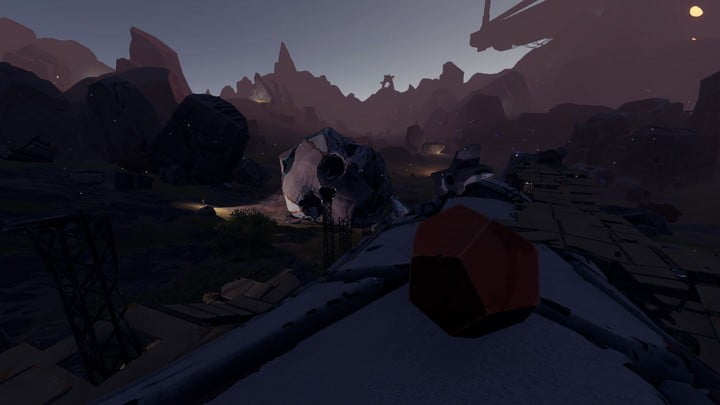
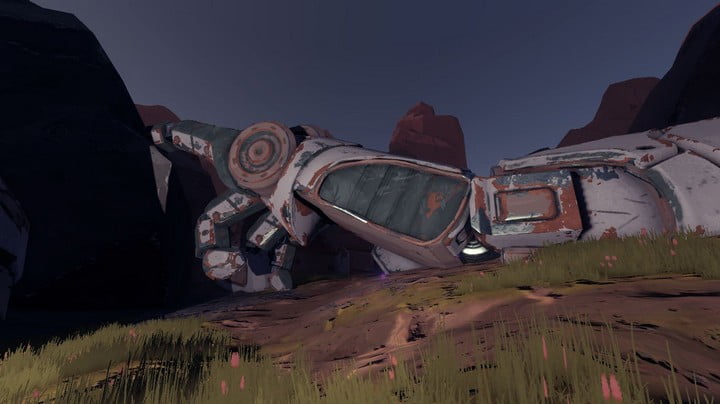
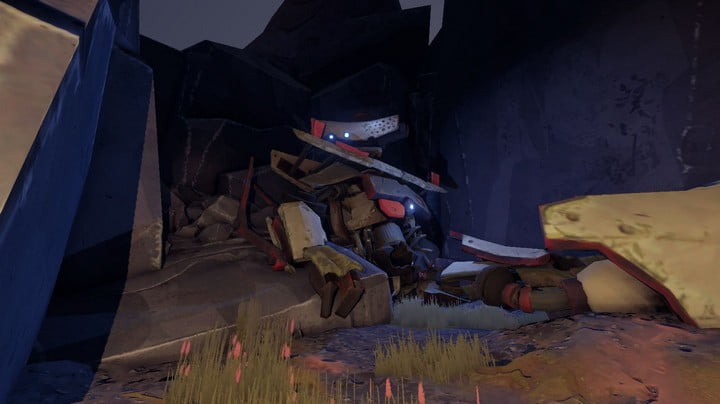
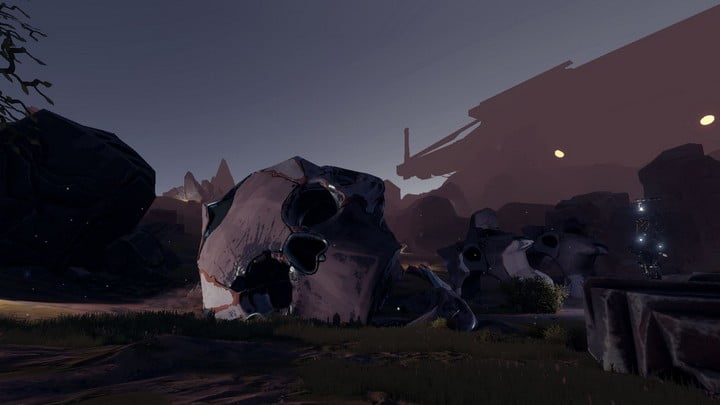
Often you won’t be able to make out the part specifically, but on other occasions you’ll see arms, rib cages, or even whole skulls amalgamated into the planet’s surface. To spend any time on Tölva is an eerie and stark experience, made even better by a beautifully-designed robotic head-up display.
The Signal From Tölva is, at its whirring, robotic heart, a first person shooter. And one of the conceits of the FPS in recent years is that, when you take damage, the screen bleeds to show you how close to death you are. You scurry off and hide for a moment, the red haze recedes, and you feel better.
Tölva takes that idea and runs with it in spectacular fashion, with your robotic display becoming gnarled with static and interference the more you take damage. Combine this with some brilliant distortion effects as you investigate the mysterious signals of the titular planet – along with an electro-magnetic spectrum analyser to help you find them, that turns the world into a humming, fizzing spectroscope – that grow stronger as the game progresses, and you’ll really feel connected to that world.
Like the HUD, reload animations – dropping the staid clip-swapping mechanic and replacing it with jump-starting your weaponry with cables from your chest – are also a highlight of the game’s robot-themed visual flair, in a world of humdrum shooters.
The other conceit of first person shooters, that we all just take as read, is the respawn. Games have tried to explain it away in the past with varying degrees of success – from BioShock’s VitaChambers to Grand Theft Auto‘s hospitals – but The Signal From Tölva absolutely nails it, thanks to its thematic roboticness.
And the funny thing is, you’re never actually on Tölva at all.
Off-world
At any one time, you’re hacked into an autonomous drone robot on the surface, known as a Surveyor. If your robot gets destroyed in combat, you’ll pick another Surveyor to take over, and jump into their skin instantaneously. Your new ride might be miles away from where you died, but get to keep your load-out; this also becomes a handy fast-travel mechanic if you don’t want to schlep back form the arse-end of nowhere to turn in a quest.
This mechanic is, quite frankly, brilliant. It’s an incredibly simple yet elegant solution to the idea of respawns being, well, stupid, but we all ignore it because they’re mechanically necessary. Top marks to Rossingol and the Big Robot team for that.


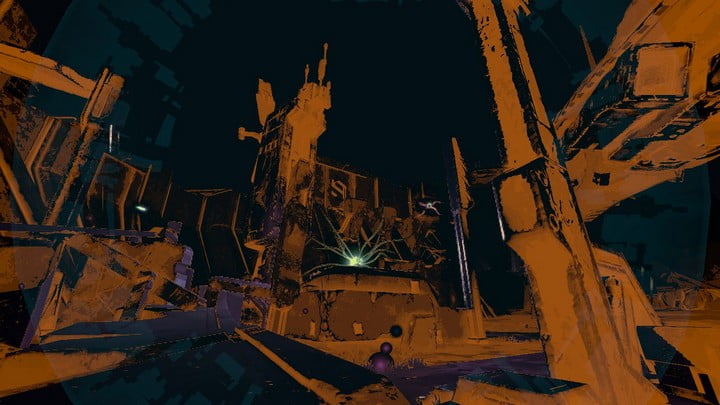
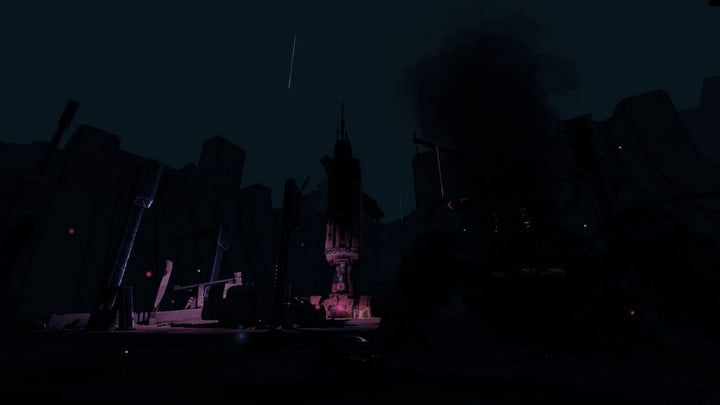
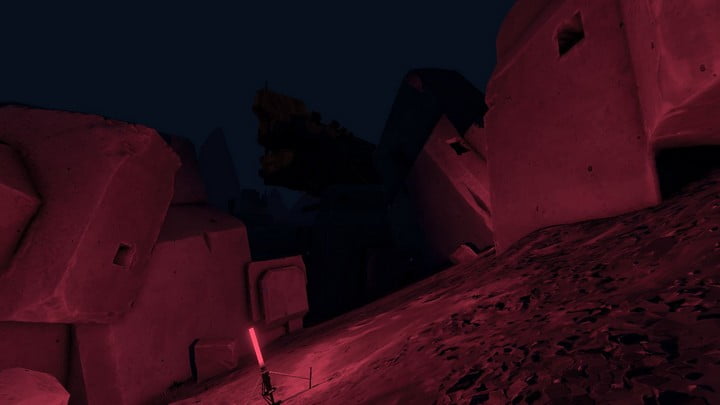
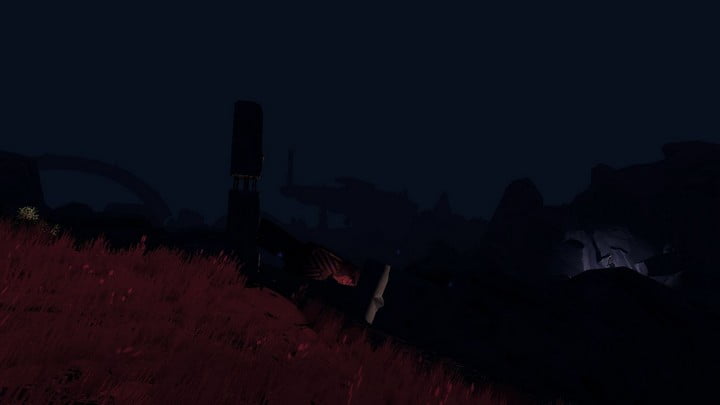
The trouble is, for all of those solid foundations, it’s not the same story throughout.
For one thing, viewing the world through the robotic HUD looks just right, but I feel a bit like a bloke in a robot suit. There’s no way of empirically measuring this, of course – it’s all relative and I could be a hundred feet tall on a very large planet – but I feel like I’m about six feet tall, walk about three miles per hour, and I carry a rifle in two hands.
Other than a few basic upgrades, like shields and area of effect mods that are materially no different to basic Plasmids in BioShock or Augmentations in Deus Ex, I don’t ever feel like a cool, sci-fi robot. There’s none of the gut-punching, bass-note thumping thrum of stomping around in Fallout 4‘s Power Amour. At times it’s like taking part in a standard first person shooter, just with a natty robotic skin overlaid on it.
Sadly, in a world filled with robotic fiction that includes the likes of The Transformers and Pacific Rim, I often feel like I’m Anthony Daniels (without the Threepio suit).
Signal to noise ratio
As first person shooters go, The Signal From Tölva can get quite repetitive. The game centres around finding unusual signal sources, as the name suggests, but in order to do this you’ll need to expand your area of operations, which includes liberating bunkers from enemy factions.
The best way to liberate bunkers is to scout them out, Far Cry 2 style, marking enemy combatants with a pip on your HUD so you can track them. Once you’ve taken over the bunker, it will stop replicating robots for the faction you stole it from, and start pumping out your friendly Surveyor bots.
You can then use this bunker as a forward operating base, to either find the next signal or expand into another base; lather, rinse, repeat, until you’ve discovered enough signals to unlock the higher level armaments that will then allow you to pass through the faux walls of dangerous terrain to the endgame.
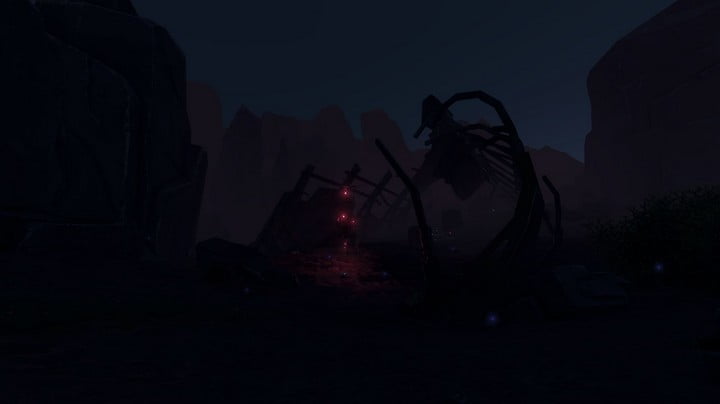
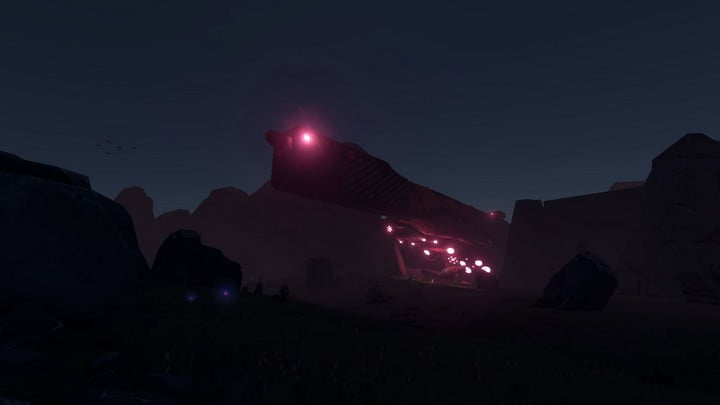
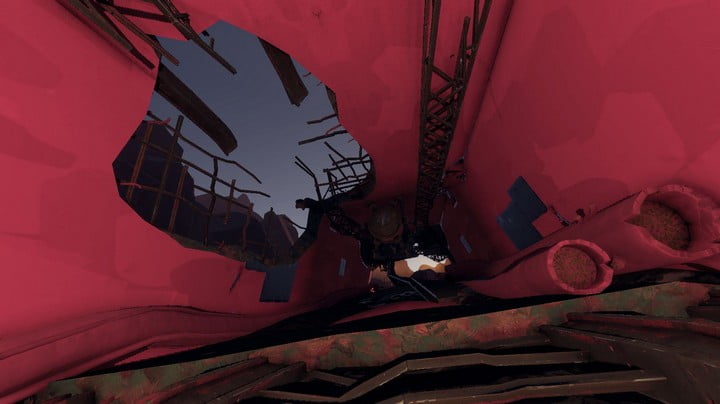
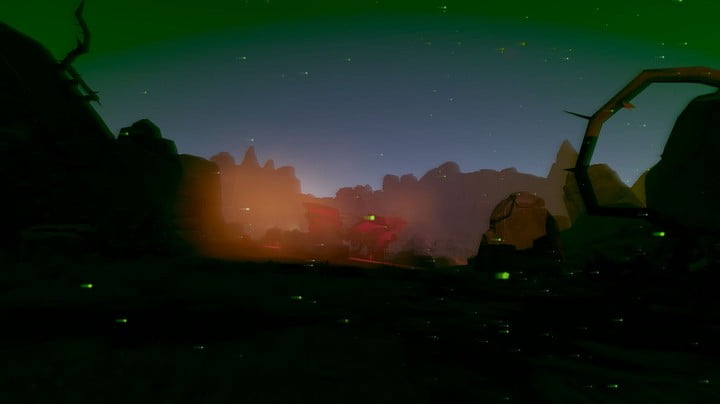
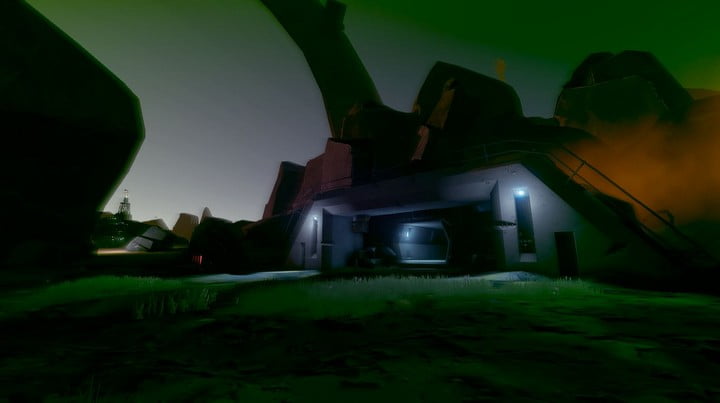
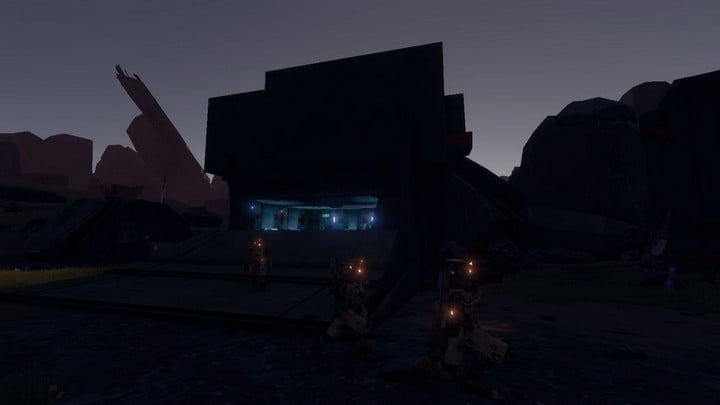
There is a little minor variety – from scavenging parts and breaking up enemy ambush locations, to incongruous (but thankfully, optional) puzzle mazes – but by and large, this bunker-signal dynamic is how the game pans out. Sometimes the enemies will hit you with turrets or Breath of the Wild-like guardian bots, and as you progress you can recruit friendly Surveyors to redress the balance, but you’ll do the same thing over and over.
Even with the ability to effectively fast travel by hi-jacking new robots, you’ll still spend a lot of time yomping through Tölva’s wilderness; this can be particularly frustrating if you’ve struck out to a far flung new bunker and died before you’ve completed the task, then had to backtrack a long way from your nearest existing outpost.
The Signal From Tölva started out with such promise, and had it finished after the first couple of hours, I would have been delighted. You’ll rarely hear people complain that a game is too long – and you can’t blame developers for stretching their games out, particularly in the age of no questions asked refunds for play times under two hours – but had this been a tighter, more focused experience, I would have much preferred it.
With every hour that went on, however – of grinding out territory, unlocking ranks and progression-blocking equipment, and above all else, putting countless miles on my robo-pedometer – I was thankful it was over when I activated the game’s endings, which sadly felt like damp squibs by that point.





